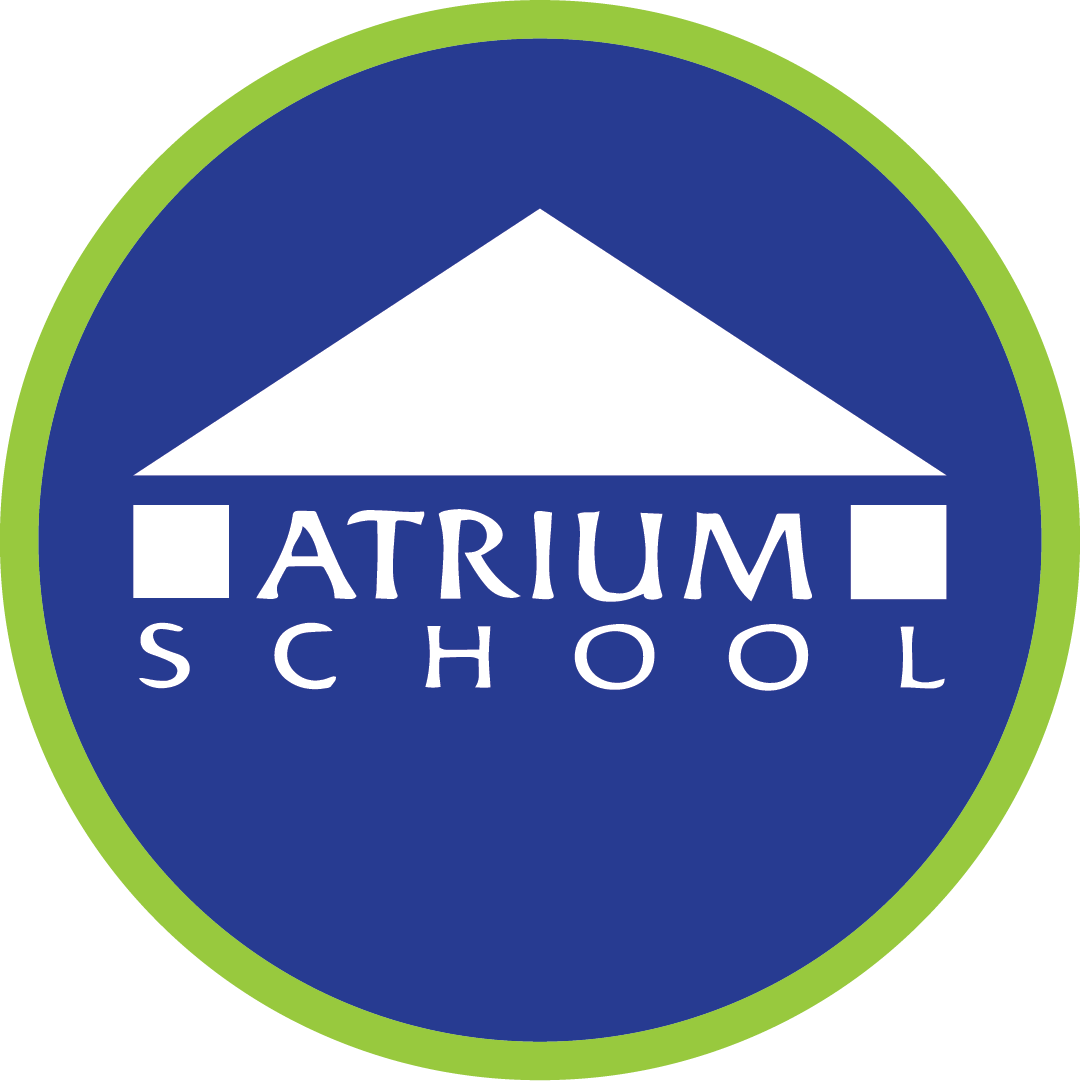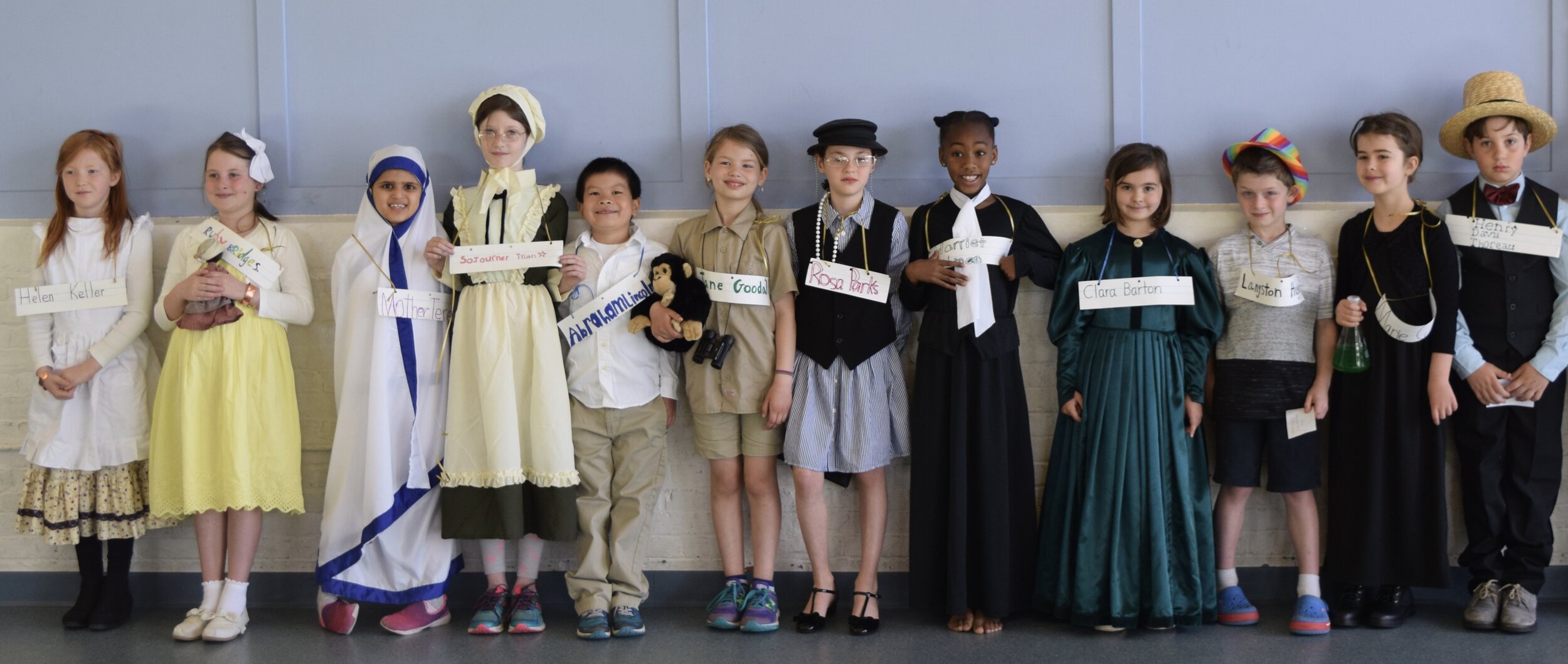Grade 2
For second graders, the thirst for information knows no bounds. Children enter second grade eager to learn as much as they can about the world around them and to take on the extra responsibilities of an older grade, including having homework for the first time. Friendships are very important, but so is the care and approval of the adults around them, including their teachers, with whom they are eager to form warm and trusting relationships. A desire for increased independence – from tying one’s own shoes to reading chapter books – also comes into play. They need a learning environment that is both challenging and encouraging of their independence and risk-taking, but at the same time safe, comfortable, and loving.
Second Grade Theme: "What Is a Human Being?"
Thematic study is a way of focusing all aspects of children’s education at Atrium into a central idea. This interdisciplinary focus allows all kinds of learners to develop skills and experience success in their academic lives. Throughout the year, students have opportunities to share their work with their community and make connections between their learning and the world around them.
Grades 2 and 3 work closely together in literacy and art, as well as theme studies. A significant component of our thematic study of human beings centers on human resilience in the face of struggle, and bravery. We begin the year talking about facing our “dragons,” or fears, as well as taking risks that will help us learn and grow. Children have a chance to talk about things they are afraid of, and to identify risks they would like to take this year. We learn about dragons and dragon folklore, and the children create unique dragons to symbolize the things they want to conquer.
In addition to learning about the things that all humans have in common, we take a close look at human variation. We explore ways that human beings can be different in terms of learning styles, abilities, and interests. We build on the concept of respect, including respecting and taking care of ourselves, each other, and the environment. We learn about finding our own authentic voices, listening to the voices of others, being allies to ourselves and others, and standing up for what we think is right. We learn how to be an “ally” and what being an ally has meant in many different historical contexts. We work toward a sense of empowerment and pride in sharing our individual gifts and in being who we are as people, and talk about times in history when people have worked together to create change, such as the Civil Rights Movement.
A significant second grade project called the Upstander Project begins in January and lasts until May. During this time, the class studies many historical events that took place in the United States between 1830 and 1970. This study includes a close look at the Underground Railroad, Jim Crow Laws, and the Civil Rights Movement. Each child receives a special “upstander” – a hero who made a significant difference in our country during this time period, from Harriet Tubman to Dr. Martin Luther King, Jr. Each child studies their own upstander for the whole semester, completing several projects that culminate in a class presentation about that historical figure. For this presentation, each student pretends to be the hero, telling us about their life and contributions. Presentations last between 30 and 60 minutes and are supported by teachers and classmates. After all of the presentations are done, a special Upstander Project celebration is held for the whole class. The children get to wear their costumes around Watertown, go out for ice cream, and visit our special place, Willow Pond.
Classroom Structure
Literacy
Every day, each student completes five literacy requirements, known as our Daily Five. These include short lessons and practice in writing, spelling, reading, handwriting, and vocabulary skills. Children choose the order in which they complete their activities, and take breaks between activities for short lessons and sharing of ideas and information.
In Writer’s Workshop, students write about topics that they choose. Some children spend the time working on a special, focused project, such as poetry. Children share their stories and poems with friends to get suggestions. This is a time when students can share their works-in-progress with a group of classmates to get feedback. Teachers confer individually with students to help both with story construction and with the mechanics of writing at the level at which each child is working. These conferences inform mini-lessons and provide useful opportunities to individually assess the creative and mechanical aspects of each child’s writing. We have a special Poetry Cafe in April to celebrate poetry with our families, recite favorite poems, and share the poems we have compiled in our own class poetry book.
In Reader’s Workshop, students choose from a range of books appropriate for their current reading levels and find comfortable spots around the classroom where they read independently or with a partner. During mini-lessons, we explicitly teach word-solving and comprehension strategies. We discuss many facets of the reading experience, including how to choose books that we will enjoy; genres, series, and authors; what kinds of writing make us want to keep reading; how to give a book a good chance; and when it is time to put a book down and pick another. We study fiction, various kinds of non-fiction, and poetry, nurturing and celebrating connections to reading.
All of our lessons are designed to teach children to be “good readers.” Good readers read for meaning and have a wide variety of strategies that they use to solve words. They learn to tell which books are “just right” for them. They reread sections that don’t make sense in the first reading, asking for help as they need it so that they always understand what is going on. The quiet stretch of time to read is something many children look forward to and is a crucial part of becoming a strong, independent reader. During reading time, we confer with individual students, keeping close track of their progress, making sure they have “just right” books that hold their interest, teaching reading strategies.
Each second grader is also part of a reading group some time during the year. Reading groups are small groups that meet to read the same book together. These groups are made up of children who are at a similar reading levels or who have in common the need to learn a particular strategy. Much of the sharing and discussion in these groups mirrors that of adult book groups, and we choose books that we think each group will find engaging.
During Word Work, which includes handwriting, spelling, and vocabulary work, the class is engaged in becoming word solvers and learning how the English language works. We focus on a range of word knowledge, from short vowel sounds, to learning about vowel teams (such as “ea” and “ee”), to learning about spelling rhyming words and words with the same ending sounds. Students find that if they can spell “black” then they can spell “snack,” etc. We also work hard on learning how to spell non-phonetic words and a core of high frequency words. Word Work is a time of direct instruction as well as practice games. As much as possible, we try to make Word Work interactive and fun. We work on expanding our vocabularies, collecting “powerful words” from the books we read aloud and to ourselves, and using them in the classroom. We practice handwriting and pencil grips. All of our Word Work lessons are closely linked to the children’s weekly homework.
Mathematics
Math is taught in a workshop model similar to those used for reading and writing. We use the Investigations math curriculum developed by Technical Education Research Center (TERC). Children come together in their math meeting area to discuss a mathematical concept and then work individually or in small groups on an activity or problem that is appropriate for their level of understanding. Sometimes this means that children are working on the same problem and extending it according to their abilities. Other times, there are two or three choices of math problems that range in level of difficulty. Much of our math work is done in a hands-on way, with materials available for use throughout math times. The group comes back together toward the end of the math hour to share ideas and strategies and to summarize the work done that day.
Science
We cover specific areas of science as they relate to our overall theme, “What Is a Human Being?” We become naturalists, recognizing our interdependence with the earth, using Willow Pond as our base of observation all year long. Our Willow Pond studies are often driven by the interests of the particular group. For example, in past years we have focused on birds and trees. In addition, we learn about the human body, beginning with the skeletal system and extending to other systems in the body, including the nervous system and the senses. These areas of study allow for plenty of fun exploration and experimentation.
Homework
Beginning in mid-October, the second graders have spelling and reading homework each week as well as a short math assignment. Students have a week to complete their work so that they can pace themselves and still have time for after-school activities and time to play and rest. In January, students begin theme study homework related to their Heroism Studies Projects. The homework for this project is given out in increments, and culminates in their final Heroism Study presentations in May.






